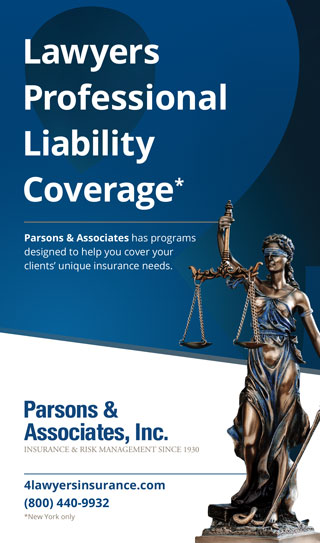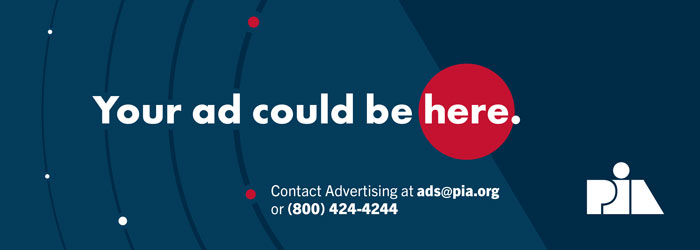With competition at an all-time high, many agencies face the dual challenge of attracting new hires and keeping their current employees engaged and productive. Let’s review some strategic insights and actionable tactics to help you navigate the talent crunch—ensuring long-term success.
Understand the talent landscape
Turnover, disengagement, and low productivity are costly problems exacerbated by hiring misfits or failing to retain skilled employees. Many agents rush the hiring process, making decisions based on desperation rather than strategy. The cost of these mistakes is profound—especially for agencies that rely on high-performing producers and client-facing roles. Here’s how to do it better.
Test and assess for precision hiring
Hiring the right people starts with understanding their capabilities. Don’t assume candidates’ skills based on experience alone. Use tools to test their proficiency in sales, administration or technical insurance knowledge. Consider: online skill assessment platforms, personality assessments, and case scenarios in which you present real-world challenges and evaluate candidates’ problem-solving skills.
By incorporating these tests and assessments, you gain deeper insights into candidates, ensuring better alignment with your agency’s needs.
Enhance your hiring page
Your hiring page should reflect your agency’s unique culture and values—and, you should use video. Include engaging video content such as: visionary CEO videos to highlight your mission and goals; employee testimonials to showcase success stories within your team; and day-in-the-life features to offer a glimpse into the daily roles at your agency.
Build a robust employee referral program
Statistically speaking, referrals are the best source for quality hires. Transform your entire team into active recruiters by making it easy for them to share job openings through social media and incentivize successful referrals. Include tools like QR codes, mobile ads and branded promotional materials.
Here are additional points to consider:
Eligibility. Determine what roles will be eligible for the program. Will executive and managerial hires earn a payout? (Not a bad idea.) Will executives, managers, human resource or recruiters be entitled to a payout? (Maybe, depending on the circumstances.)
Qualifications. Will third parties such as customers, clients, vendors and others also have a referral program available? (I see no reason why not, so long as no conflicts of interest are created.)
Reward qualifications. How will you incentivize and reward referrals? Will you pay for a quality referral regardless of whether they get hired? That may be helpful in building an applicant pipeline.
Imbursement process. What happens if they are hired? If the reward is cash, what is the payout process? That usually fluctuates based on scarcity, pay and turnover frequency of the position. Is payment all at once or staggered over a period of time? The payout timeline needs to make sense to your agency. For example, at a retail establishment, it doesn’t make sense to offer a bonus after a year of employment—few people would ever get paid.
Types of rewards. What can you offer other than cash? The ideas are endless. Let employees come up with a new one every month. An electric bike, a weekend getaway, a day off with pay, donation, recognition, gift cards and quarterly drawings. Lead with your creativity.
Referral process. Make it simple to use. Let employees and referral partners know who you are looking for specifically. Make sure that person does not apply directly, instead make sure the person applies through the referral source.
Have the employees who refer a candidate supply the following answers:
- How they know the candidate.
- What role the candidate is applying for.
- How would they describe the candidate’s work strengths?
- How would they describe the candidate as a person?
- What makes the candidate a good fit for the office’s culture?
Let the referring employees know if the candidate will be interviewed—and if not, why not. With practice, employees will make better referrals. Additional tips include the following:
Timely response. Be considerate of the fact that an employee made a referral, and make sure to follow up with that candidate as soon as possible. Share your Hiring FAQ. (You have one, yes?)
Follow up. Let the employee who made the referral know if the candidate is hired. If the candidate wasn’t hired, explain why. Again, this will help the referring employee make better referrals in the future.
Invest in your referral program
Brand and market the program. Get posters up. Make T-shirts and create great social-media posts for employees to share. Celebrate referral awards. Blow up the checks and post them to social media. Keep an ongoing scorecard and gamify the program.
Analyze your data. What positions work best for referrals? What incentives and rewards work best? What do you have to do to beef up the other opportunities? Watch for concerns related to diversity and other company initiatives.
Compensation that reflects value
Compensation remains the No. 1 significant driver of retention. Develop a clear philosophy regarding pay—whether at, above, or below the market rate—and communicate it transparently. Incorporate incentive structures that align with performance and company goals, ensuring employees feel rewarded for their contributions. Also make sure to stay on top of what is going on in the marketplace.
Onboard for success
Onboarding is more than a one-time event; it’s a process that sets the tone for an employee’s journey. Create a comprehensive onboarding program that includes:
- Entrance interviews: Understand why new hires joined your agency and use that data to refine your hiring strategy.
- Early feedback tools: Use a 60-day survey to capture insights from new employees about what’s working and what can improve.
- 90-day quality assessments: Determine if the hire is a good long-term fit and identify growth opportunities.
Embrace hybrid-work models
Hybrid work has become an industry norm. Insurance agencies can benefit by broadening their talent pool and improving work-life balance for employees. However, managing remote work comes with challenges:
- Technology: Equip employees with the right tools, from ergonomic chairs to reliable video conferencing systems.
- Engagement: Hold weekly one-on-one meetings and periodic in-person gatherings to maintain connection and collaboration.
- Security: Ensure home offices meet safety standards and implement strict cyber security protocols to protect sensitive client data.
Flexibility, when paired with thoughtful oversight, enhances productivity and employee satisfaction.
Turnover is expensive
The insurance industry has not been immune to the challenges of employee retention. Key trends include:
- First 90 days: Gen Z employees often quit early due to poor onboarding or unclear expectations.
- Mid-career professionals: Those in their 30s and 40s seek better flexibility or growth opportunities.
- Women leaving the workforce: Address the needs of working parents through child care support or flexible schedules.
- Early retirees: Engage retirees in part-time, high-value roles to retain their expertise.
Retention isn’t just an HR issue—it’s a financial imperative. Turnover costs—including recruitment, training and lost productivity—can equal or exceed an employee’s annual salary.
Moreover, every HR challenge eventually impacts sales. For example, a $50,000 turnover cost requires an additional $200,000 in revenue to offset. Remember this: Every personnel problem becomes a sales problem.
Prevent burnout in high-stress roles
The fast-paced nature of insurance work can lead to burnout—especially during renewal cycles or claims surges. I believe that most of the overwhelm is generated by doing low-value tests and poor time management. Conduct workload audits to identify low-value tasks that can be delegated. For example, many businesses will utilize a company to help with their back-office processes. Improve time management strategies. For example, set agreements related to how we interrupt each other. Those individuals who have a minute can be a continual distraction causing everyone to lose focus.
By empowering employees to focus on strategic activities, you reduce stress and improve morale.
Offer career pathways
Employees are more likely to stay when they see clear growth opportunities. Provide structured career ladders, mentorship programs and skill development initiatives. For example, junior account managers can work toward becoming senior producers or team leaders. AI is a good tool to use to help develop agency career ladders.
Focus on employee branding
Your brand is more than just a logo—it’s the story your agency tells about its workplace. From office decor to team apparel, create a visual and cultural identity that resonates with both employees and candidates. For remote staff, send branded items to help them feel connected to the organization.
Experiment with bold ideas
Innovative strategies like Zappos’ Pay-to-Quit Program offer employees money to leave if they’re not fully committed. While unconventional, this approach ensures you retain only those who are genuinely invested in your agency’s success. What out-of-the box ideas have you seen other agencies employ? Have a contest and let your employees come up with some bold ideas.
Celebrate the wins
Recognition doesn’t have to be grandiose. Small, consistent gestures like celebrating milestones, sending handwritten notes, or hosting team lunches foster a culture of appreciation and belonging.
Conclusion
In the competitive world of insurance, your employees are your greatest assets. By focusing on strategic hiring, thoughtful onboarding and meaningful retention initiatives, you position your agency for long-term success.
Remember, a strong workplace culture and clear growth opportunities not only attract top talent but also keep your current team engaged and thriving.

Don Phin
Don Phin is an employment lawyer, trainer, speaker and coach. He is the editor of Employment Practices Liability Consultant (EPLiC) published by IRMI. For more information, including retention tools that can help you implement many of the actions outlined in this article, email don@donphin.com. You also can find additional free tools at www.donphin.com/free-tools/.





